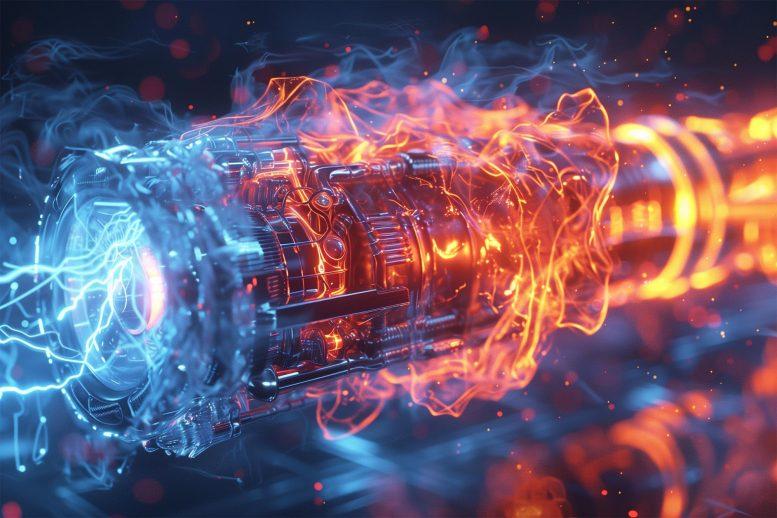The internal combustion engines in petrol-powered cars generate a great deal of power by burning fossil fuels, but they do so with significant inefficiency. Shockingly, nearly three-quarters of the energy consumed is lost as heat through the engine and tailpipe.
This raises an intriguing question: what if some of that wasted thermal energy could be recaptured and put to practical use?
A Breakthrough in Energy Recovery
Scientists have long pursued the idea of harnessing waste heat to improve vehicle efficiency, though practical implementations have been limited, largely due to cost-effectiveness concerns. However, a team of researchers has now developed a device that may change the game. This device, designed to convert exhaust heat into usable electricity, features a relatively simple design that can be added to an existing car’s tailpipe—or even the exhaust vents of other vehicles such as helicopters.
According to a study published in ACS Applied Materials & Interfaces, the prototype thermoelectric generator (TEG) achieved a maximum power output of 40 Watts—enough to power a lightbulb. And this is just the beginning.
How It Works
Thermoelectric generators function by utilising temperature gradients. Essentially, when one of these devices is placed near or on a surface emitting waste heat, electrons are drawn from the hot side to the cold side, creating an electric current.
In this case, the researchers employed a semiconductor made of bismuth-telluride to facilitate this process. However, the primary challenge in designing such a system lies in maintaining the necessary temperature difference. Without intervention, the cold side of the generator would gradually heat up, diminishing the current.
Some existing solutions rely on water cooling, but this introduces complications such as increased complexity and bulkiness. The researchers aimed for a more adaptable and practical alternative.
A Simple Yet Clever Design
To overcome this hurdle, they devised a heatsink design featuring a cylindrical structure with fin-like protrusions that wrap around the tailpipe. This design increases surface area, allowing heat to dissipate more effectively via forced convection—where ambient air carries heat away naturally.
When simulating high-speed environments, the research team found that their thermoelectric system could generate up to 56 Watts of power when travelling at typical car speeds. Impressively, in a helicopter, where airflow is significantly greater, the system produced nearly three times that amount—146 Watts.
Industry Players Driving Innovation
Several established companies are actively involved in the development and commercialisation of thermoelectric generator technology. Notable players include:
- Gentherm – A global leader in thermal management solutions, Gentherm is investing heavily in thermoelectric applications for automotive and industrial uses.
- Alphabet Energy – Specialising in waste heat recovery, this company is developing thermoelectric systems to enhance efficiency in various industries, including transportation.
- Bosch – Known for its advanced automotive components, Bosch is researching ways to integrate thermoelectric generators into modern vehicle designs.
- Tenneco – A key supplier of exhaust systems, Tenneco has explored thermoelectric solutions to improve fuel efficiency and reduce emissions.
- BMW – The automotive giant has been actively testing thermoelectric generators in their vehicles, aiming to boost energy recovery and reduce fuel consumption.
Implications for the Future
The researchers concluded that these results “could potentially pave the way toward the integration of thermoelectric devices into complex system designs for practical applications.”
If developed further, this technology could lead to vast improvements in vehicle efficiency and sustainability. In an era where energy conservation and emissions reduction are increasingly critical, such innovations may play a pivotal role in the future of transportation.
The Bigger Picture
This breakthrough is part of a larger trend in energy innovation. As industries explore new ways to enhance efficiency and reduce reliance on fossil fuels, AI-driven energy solutions, renewable alternatives, and advancements in waste heat recovery continue to gain traction.
For more insights into energy efficiency and cutting-edge technological advancements, stay tuned to our latest reports and analyses.

